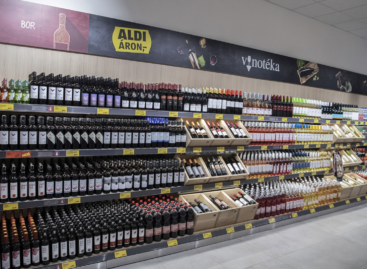The construction industry faces new EU regulations
From 2028, it will be mandatory for all new buildings larger than 1,000 square meters in the European Union to calculate their life cycle carbon footprint. The regulation will apply to all new buildings, regardless of size, from 2030. In the domestic market, Wienerberger’s Porotherm ceramic masonry system is the first to have the necessary environmental certification.
 The new European Union Building Energy Directive will fundamentally change building design practice. The carbon footprint value will be found on energy certificates, and a requirement value will also be indicated on the documents. This means that in addition to energy efficiency, the carbon footprint of the installed building materials and products also becomes a determining design aspect.
The new European Union Building Energy Directive will fundamentally change building design practice. The carbon footprint value will be found on energy certificates, and a requirement value will also be indicated on the documents. This means that in addition to energy efficiency, the carbon footprint of the installed building materials and products also becomes a determining design aspect.
Porotherm ceramic bricks and lintels play a pioneering role among masonry materials, as they have a standardized environmental certificate for domestically manufactured products, i.e. EPD (Environmental Product Declaration). This document presents the environmental impacts of the entire life cycle of the product based on authentic, comparable data, according to internationally recognized standards. The EPD certificate not only ensures legal compliance, but also provides a tangible advantage for obtaining international sustainability certifications such as LEED or BREEAM.
Porotherm ceramic masonry has numerous advantages in terms of sustainability. It can ensure the operation of a building for up to more than a hundred years, while requiring essentially no maintenance. The environmental impacts of production are thus spread over decades, which is why the annual average GWP (Global Warming Potential) value is significantly lower than for materials that need to be replaced or repaired more often.
Wienerberger procures the natural raw materials required for the production of ceramic bricks – such as clay, water and sawdust – from local sources, so that production can be operated with regional supply chains, minimizing transport distances. Ceramic masonry elements are fully recyclable: after demolition, the bricks can be reused or incorporated into various construction processes as secondary raw materials.
Responsible material selection has an impact on the entire life cycle of a building, and in light of new EU regulations, it will soon become not a choice, but an obligation. The EPD certificate for the Porotherm system already provides transparent information for the 2028 and 2030 requirements, helping architects and investors make informed decisions and gain a competitive advantage.
Related news
KSH: the volume of construction production in November decreased by 1.7 percent compared to a year earlier and by 2.0 percent compared to the previous month
🎧 Hallgasd a cikket: Lejátszás Szünet Folytatás Leállítás Nyelv: Auto…
Read more >The price increase in the construction industry is enormous, it is worth postponing investments
🎧 Hallgasd a cikket: Lejátszás Szünet Folytatás Leállítás Nyelv: Auto…
Read more >(HU) Sztereotípiákra cáfol rá a KÉSZ Csoport nőnapi kampánya
🎧 Hallgasd a cikket: Lejátszás Szünet Folytatás Leállítás Nyelv: Auto…
Read more >Related news
Bread and wine for 399 forints, mulled wine for 450 forints: ALDI opens its own downtown Christmas market
🎧 Hallgasd a cikket: Lejátszás Szünet Folytatás Leállítás Nyelv: Auto…
Read more >MBH Analysis Center: Hungarian tourism is soaring – further growth is expected in the hotel market
🎧 Hallgasd a cikket: Lejátszás Szünet Folytatás Leállítás Nyelv: Auto…
Read more >It’s really worth coming together: Lidl and its customers make Christmas more beautiful for 2,000 disadvantaged children
🎧 Hallgasd a cikket: Lejátszás Szünet Folytatás Leállítás Nyelv: Auto…
Read more >






